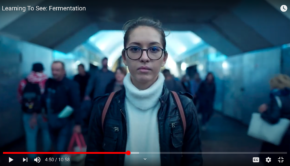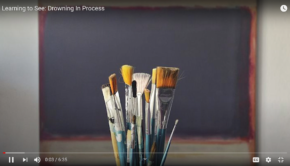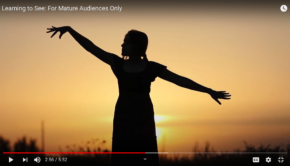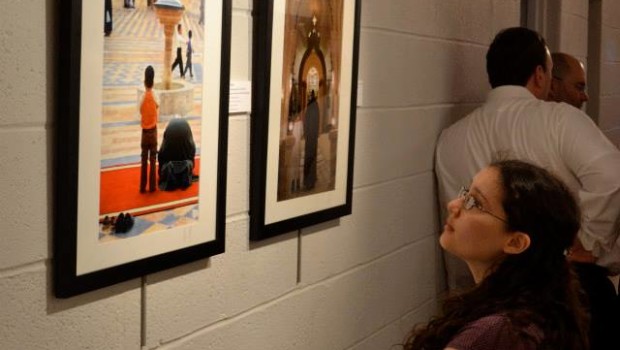
Churches are Called to Curate and Create Culture
The Cultural Mandate
By Lisa Smith
Reprinted from the Herald Magazine January-February Edition
What difference does it make if a song is never sung again; never heard again? What is lost when a chant is gone – a song sung for centuries that holds a link to the ancient roots of a culture of faith?
Last year as images of war and destruction in Syria flooded the news I stood shoulder to shoulder with people from all over the world with different religious backgrounds and experiences, different ages and cultural connections listening to the haunting sounds of ancient Syrian Orthodox chants sung perhaps for the last time by the last people on earth to remember them. The recordings were part of a series by Jason Hamacher’s Lost Origin Productions called Sacred Songs of Syria documenting a culture that was being destroyed even as we listened.
We don’t take seriously the “culture” part of the cultural mandate. If we did we would see our role as one which takes very seriously the responsibility to nurture and create space for creativity. We would encourage, train and theologically educate upcoming artists for work in the world not just the church. We would make cultural engagement through quality professional arts offerings one of our highest priorities. We would stand as an alternative to commodity based consumer culture by supporting arts and culture contribution as our gift to society.
Listening to the chants echo through the hall while looking at photographs of kidnapped Syrian Orthodox priests made the urgency of what was occurring a world away more immediate. The music and images made the war and devastation less abstract and more personal; made the people of the city of Aleppo more like neighbors – people I could have met and could miss. The eyes and comments of the other audience members made it clear that we all felt something difficult to name, something that connected us together, not only with those suffering in Syria but also to people ancient and long gone. As we listened to voices forever silenced I felt an unnamed yet clearly shared sense of loss. I wondered just what it was we felt we were losing. In a way it seemed strange to mourn the loss of these pieces of a culture I had previously never even known existed.
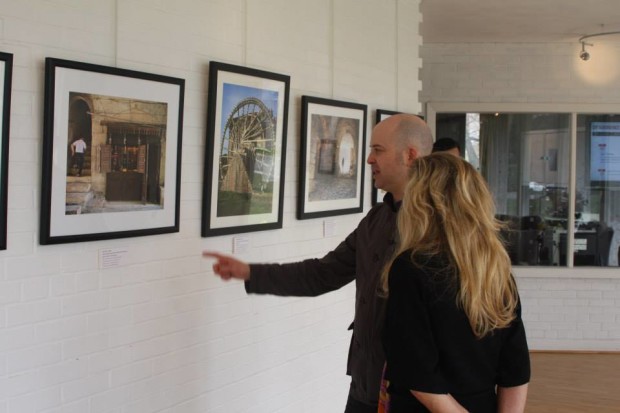
Jason Hamacher with Poopa Dweck, author of the book “Aromas of Aleppo.” Dweck flew in from Miami, specifically to see the Syria exhibit.
As I wondered about this sense of loss I thought about why it seemed so personal and especially tied to faith. I think listening to these ancient Syrian hymns, hymns that trace back to the earliest church, reminds me that I am a part of a shared history of people. Beyond my own personal history I have an identity that links to something ancient and worth preserving. I don’t simply exist in my own private world and past. Through this music, in a language I don’t understand I can somehow connect to that shared past, even as it is being lost.
It’s not just nostalgia, though. The music also conveys the permanence of a shared set of values carried down through centuries; the value of worship, of praise, lamentation, awe and wonder. The value of gathering together and joining voices to make sounds that carry to the heavens. It is something that can’t be described in books but rather lives in the beauty of the soulfulness of voices. These songs have been passed down from generation to generation, from one voice to another ear. Although it is unlikely these chants would make sense in most modern worship services they convey something that feels relevant today.
It is sad to lose these chants and it makes me wonder if my own tradition of worship conveys these things as well as the chants obviously have, lasting for centuries. Clearly, this music, simple as it is, has been deemed worthy of shaping the soul life of congregations for so long – creating its culture. That isn’t something to be lost lightly.
This makes me wonder how many would mourn the loss of our current contemporary Christian culture. Is it really sustaining us in the way these ancient chants (doorways to larger rituals) did? Are we investing the energy, attention and resources needed to develop a culture that is truly energizing and life giving within the walls of our churches, not to mention creating art, music and writing to contribute to the culture of the larger world?

Jason Hamacher speaking on Syria: Sacred Spaces. Ancient Prayers. At Convergence In April of 2014.
I think my sense of loss when I hear these chants is tied to a larger shared longing to reconnect to the early church and the roots of our faith. As we hurtle towards a future that is unknown (and in so many people’s estimation bleak) we feel a longing for connection to something pure; especially of our faith. As churches are asking themselves questions about relevance and investing in so many boxed solutions that aren’t cutting it, a desire to go back to the beginning surfaces as a hope for renewal of Christian ritual, living, meaning and place in the world.
I believe what we need is not a reclamation of the past but an increased ability to envision our faith anew; in ways that live not just in private prayer and Sunday mornings but in our city centers, schools, workplaces and daily lives. What if investment in songs and art and writing and ritual is not frivolous at all? What if we have underestimated entirely the value of such things and have lost part of our identity in the process? (Not to mention our capability to speak with a clear and distinct voice in the larger world.) Songs aren’t just a product for consumption to entertain or soothe. They are a vehicle to carry soul meaning through tone, rhythm, and resonance; meaning deeper than can be verbally expressed.
So often we hear that we are living in a visual culture. But what do we do with that information? Are we really tuned into the power of images to involve and shape us -and just how much we are unconsciously being influenced by them? Why is it not a primary function of the church to teach people to see through the “visual noise”?
Our responses generally are either to abstain or to embrace the noise. But those are those are lazy and irresponsible choices. As Josef Pieper suggests “A better and more immediately effective remedy is this: to be active oneself in artistic creation, producing shapes and forms for the eye to see.” Through art making we can train ourselves to listen more clearly and see more constructively thereby equipping ourselves to engage the world and effect change in a way that is glorifying to God and uplifting to others.
As often as I hear the words “creativity” and “imagination” and even “art” in church circles these days I believe we are not conscious of our responsibility to curate and create culture; not only in our churches but in our world. And this lack of conscious attention has led us to a serious deficit in artistic and creative practitioners in our communities of faith leaving us woefully inadequate to face the challenges here and ahead. How seriously do we as people of faith take God’s cultural mandate for us in our current world and for generations to come?
Nancy Pearcy, in her book Total Truth, writes:
In Genesis, God gives what we might call the first job description: ‘Be fruitful and multiply and fill the earth and subdue it.’ The first phrase, ‘be fruitful and multiply’ means to develop the social world: build families, churches, schools, cities, governments, laws. The second phrase, ‘subdue the earth,’ means to harness the natural world: plant crops, build bridges, design computers, compose music. This passage is sometimes called the Cultural Mandate because it tells us that our original purpose was to create cultures, build civilizations-nothing less.
We are to exercise our minds and bodies in service to God by “subduing” – observing, touching, and molding the “stuff” of creation. We are to form a culture. Think of the care God took in creating the world, the creative intricacy, the detail in naming. Then we were tasked to carry on the work.
But, we don’t take seriously the “culture” part of the cultural mandate. If we did we would see our role as one which takes very seriously the responsibility to nurture and create space for creativity. We would encourage, train and theologically educate upcoming artists for work in the world not just the church. We would make cultural engagement through quality professional arts offerings one of our highest priorities. We would stand as an alternative to commodity based consumer culture by supporting arts and culture contribution as our gift to society – as a way to proclaim God’s Kingdom on Earth. And we would make engaging in creative acts essential to worship and discipleship training.
Cultural and artistic engagement is not just about creating outlets for artistic people. (Though it is part of the mandate to provide them opportunities as skilled workers). It’s not just about providing “safe” alternatives for our children to watch and listen to. And it’s not just about the things we enjoy in our spare time.
It is about setting the tone of the world in which we live. It’s about utilizing the real power of art – “power to name, to criticize, to heal, and ultimately to change consciousness.” (Deborah Haynes.) It’s about learning to critique intelligently and with grace what is wrong with the present. It’s about imagining and expressing multiple possibilities for the future. It is about helping others open their eyes to see God at work in the world even where nothing spiritual was intended. It’s about finding useful systems for ethical navigation by embracing principles of improvisation, rehearsal and play. It’s about vibrant faith leading to immediate and real experiences of God that spill out into action. It’s about finding ways to remain faithful in a changing world by engaging our imagination, creativity and artistry to renew – to make the truths of the Bible and the rituals of our faith honest in our current contexts not simply an imitation or parody of what’s gone before. It’s the difference between mimicking old forms and passing on meaning. It’s about creating the culture of God’s Kingdom in this world as much as it is up to us.
We need to be concerned not just with creating great worship services or programs but with engaging, discipling and sending out the culture creators of our day.
How can we possibly believe we have permission to abdicate our place at the cultural table? God commanded us to participate – in fact to go first. To continue naming and seeing and recreating, molding this and that into something beautiful and glorifying.
And we cannot think we can take on this challenge alone. Those of us unpracticed in creative thinking let alone artistic discipline should not be so arrogant as to believe our attempts will be enough in the long run. We must engage – seriously engage artists and creatives those who as N.T. Wright put it “have a vocation to re-imagine and re-express the beauty of God, to lift our sights and change our vision of reality.” And lest we react grudgingly to the idea that some are set apart for this work let us remember Bezalel and Ohobab in Exodus 35:30-36. Those called and set apart and paid because of their skill and craftsmanship to do a particular job of culture creation.
Civic leaders are well aware of the value of the “creative class” in shaping the culture of a city. For years cities large and small have embarked on numerous initiatives to woo these creative people. They know that the presence and contribution of creatives is essential to the future of innovation and vibrancy and have seen that a failure to attract them keeps the city stuck and can even lead to decline.
Are churches not in need of those same things? If churches are having a hard time conveying the electric vibrancy of Christian faith in the West could it be we need to do more to call upon our prophets and visionaries?
Churches large and small can learn lessons from the success and failure of cities trying to attract and keep creative people. Surprisingly, smaller cities like Cleveland are actually drawing people away from creative capitols like New York by investing in what nurtures creative people like diversity, a high intellectual atmosphere, room for exploration, attention to environments, a value the arts, etc. Other cities have learned hard lessons and failed by investing in generic, inauthentic box-stores, malls, fabricated neighborhoods and large expensive complexes for sports and entertainment, etc. thus missing the point.
In the same way, highly technical, timed to the minute bands and drama teams in worship do not necessarily indicate that creativity and artistic innovation are welcome in a church. There has to be space in which to experiment where the cost is not too high. In the case of a city the cost is related to living and available jobs. In a church the cost is related to expectations of perfection, easy accessibility of subject matter and a lack of understanding about the function of an artist and willingness to allow them to “speak” into the congregation in ways that may or may not “pay off.”
So, how do we start? I’d like to suggest beginning with a shift in our own internal church culture. Starting not with what happens up front during “worship” time but with the attitude and ethos of our congregations. Once this journey is begun and an attitude shift can be seen we might find ourselves hungering for growth and outward expression.
Here are some areas to focus on based on Richard Florida’s book, The Rise of the Creative Class. These lessons from the business and civic world about attracting artists and creatives are as applicable to churches:
- Create an atmosphere where newcomers are accepted quickly as themselves and can find opportunities to contribute in a way that is meaningful to them.
- Provide opportunities for people with creative gifts that are not just a “job” that fills a need but a way to put their skills and talents to work. For example coercing the professional theatre person in your congregation to direct the children’s pageant is probably a good way to lose them.
- Value them for how they think as much or more than for what they do and give them access to and mentorship from decision makers. You might find putting a visual artist with a local business owner to solve a problem will yield exciting results.
- Talented people seek an environment open to differences. (Providing a sense that they too will be welcome and belong.) Create an atmosphere that is open to questions especially on theological issues. Allow more space for questions than answers.
- Place a high value on diversity in all its manifestations. Creative-minded people enjoy a mix of influences. They want to hear different kinds of music and try different kinds of food. They want to meet and socialize with people unlike themselves, trade views and spar over issues.
- Be open to active, participatory worship rather than passive, institutionalized forms. Creative people prefer indigenous street-level culture. They crave stimulation, not escape. They want to pack their time full of dense, high-quality, multidimensional experiences.
- Place a high value on authenticity and uniqueness. This is important to keep in mind in every area from greeters, to the look and feel of space, to sermons and outreach.
You will notice that these are not changes that take large investment of financial resources or super-performers to attract others. In a way, these require a much more costly investment – one where we are willing to change our habits, expand our faith and allow new forms of church to exist. Once our internal culture begins to open up our hearts will be more prepared to make the financial and time investments needed to go further on the journey.
There is no one-size-fits-all model for creativity in church. In fact, by its very nature each expression will be different but we must be willing escape the trap of doing things the way we have always done them and invest in creating a nurturing environment with pathways into our churches for creative people. Not only will this invite new energy and life into our congregations but it will also make it safe for those already there to express themselves more fully and live into their faith in a richer way.
This is why artistic cultural engagement is important – not so we can have better worship experiences or attract more people to our Sunday services but so we are creating the culture of the world in which we live. So we are setting the tone and the conversation; taking seriously the call to be stewards of God’s creation – offering hope and love.
We need to move the conversation about the value of arts to a much deeper level than how it can enhance our Sunday worship experience, entertain our kids or even educate us. As long as the conversation stays on this level we will miss the larger opportunity and continue to alienate those we need to help us address our deficit in imagination and creativity.
If, on the other hand, we can begin to view the value of the arts and art making as one which is instrumental to the fabric of society; one that helps to frame the way we see the world, each other and God we will open ourselves us to a revival of God’s spirit not only in our own churches but in the ways the Spirit will use us in our world.
Lisa Cole Smith is the Pastor and Artistic Director of the hybrid church/arts initiative, Convergence, in Alexandria, VA.

